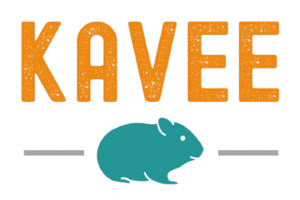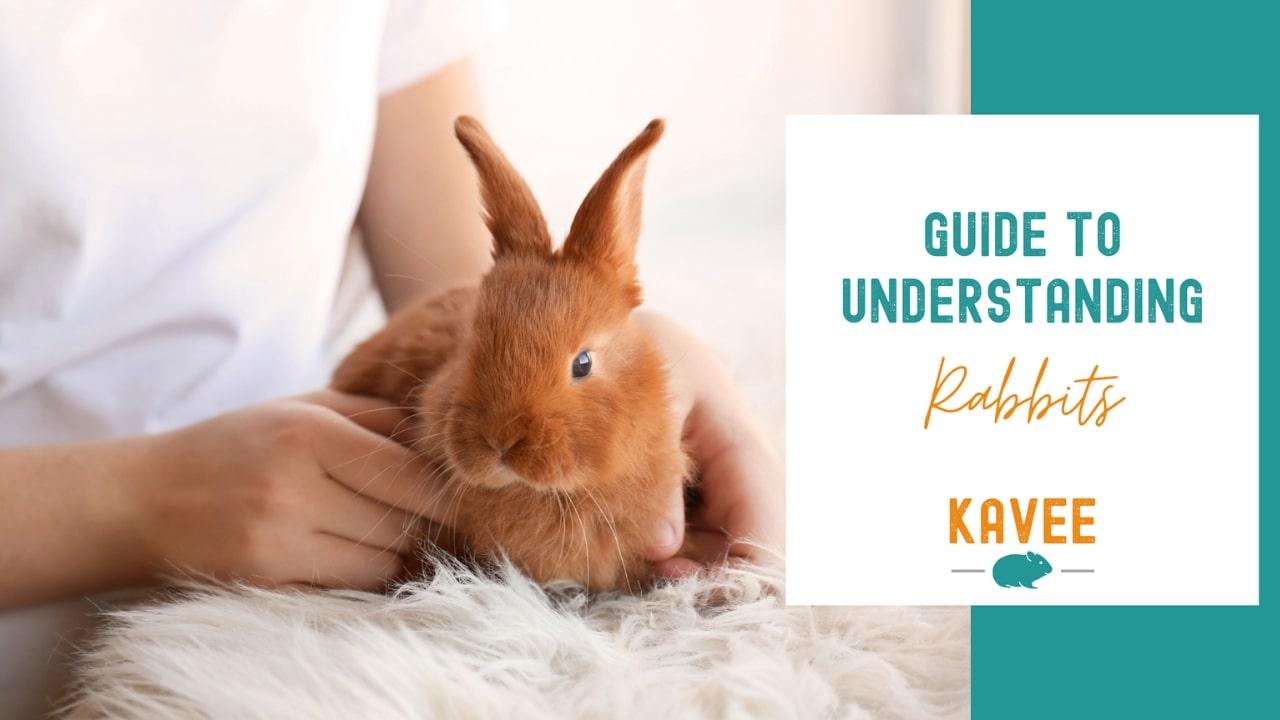The mystery surrounding a new pet is always so fascinating - what do they love? What do they hate? How are they feeling?
As much as we’d like to have them directly answer those questions, getting to know a furry companion is more about observation than conversation. If you’ve done your homework on how to look after your buns, then you’ll know that understanding rabbits is key to helping them thrive in life.
In this guide, we’ll take a closer look at rabbit behaviors and rabbit needs so that you’re fully armed with the knowledge needed to be the best bunny parent there is. Read on to get an insight into the world of your favorite furry friends!

The Meaning of Common Rabbit Behaviors
Understanding a rabbit’s body language is the secret to developing a deeper bond with your floofer, and it’s also what can help you spot if your bunny is unhappy or poorly.
While you can’t communicate with them, you can learn some of the most common rabbit behaviors and how to appropriately respond to them.
Binkying
Let’s start with our absolute favorite bunny behaviour here at Kavee… yep, you guessed it, the infamous binky! Leaping into the air and twisting their bodies from side to side, binkying denotes a particularly joyful or excited rabbit.
While it may look a bit strange at first, this is a completely natural behavior. In fact, if you witness plenty of hoppy binkies on a daily basis, you can rest assured knowing that you’re doing something right!
Digging
Even if your bunny is now a homebody, they’ll still feel the need to participate in one of their favorite activities: digging. Digging is a completely natural behavior that should be encouraged even in the comfort of your home (but ideally away from your brand-new carpet!).
In the wild, bunnies dig to create complex interconnected tunnels (aka ‘warrens’ or ‘burrows’) where they can find safety and rest. While pet rabbits get plenty of opportunities to find safety within their pet palaces, they still love to dig for fun and to keep boredom away.
So make sure you provide your bunny with plenty of opportunities to dig - whether it’s in a bunny-proofed corner of your garden, a sandpit, or a DIY tray filled with hay and shredded paper.

Chewing
Since a rabbit’s teeth grow about a tenth of an inch (2-3mm) every week, it’s important that they keep them in shape by chewing on things - another of their most common and important rabbit behaviors.
While this might sound like a worrying prospect for your furniture, you can use rabbit-safe chew toys to keep their teeth (and minds!) busy.
However, not all chewing should go unnoticed: if your bunny keeps nibbling on their cage bars, a trip to the vet may be in order to rule out any potential health problems.
Thumping
When a rabbit thumps their hindleg, it means that they’re on high alert, stressed, and anxious. This is another common behavior and something that wild rabbits would do to warn others that trouble is afoot.
While your pet rabbit might not be in the same kind of immediate danger, it’s still best to check what could be upsetting them and remove it if possible. You should also always make sure that they have safe hideys to retreat into whenever they feel frightened.
Flopping
A rabbit flopping may look dramatic, but it’s nothing to worry about! In fact, a rabbit who flops over onto their side is a particularly relaxed and contented one.

Chinning
Like other animals, rabbits have scent glands on their face, and so will rub their chins as a way to mark their territory. It’s likely you’ll see your rabbit ‘chinning’ against furniture, on another bun… and even on you!
If a rabbit rubs their chin on you, it’s a sign of affection and your bunny’s way of saying that you’re important to them (and also that you belong to them, but that doesn’t sound as sweet!).
Common Rabbit Needs
From providing the right foods to ensuring they have a bunny friend to play with, there are a few basics you’ll want to get right when it comes to responsible rabbit care.
A Healthy Diet
Cartoon rabbits munch on carrots all day long, but the reality for our furry friends is that the main component of a rabbit diet should be hay and grass. This high-fiber food plays a vital role in healthy digestion, while fruit and vegetables are better fed in small portions.
Your buns will also need a serving of fresh leafy greens on a daily basis - think cabbage, cilantro, mint, or broccoli. Keep their diet varied and alternate between safe greens.
On top of that, provide them with a small serving of high-quality pellets and unlimited access to fresh drinking water.
Regular Grooming
Although rabbits regularly wash and groom themselves, it’s important that you maintain a good grooming routine. Not only will this keep your rabbit’s locks looking luscious - grooming is essential for their general health and hygiene.
Rabbits that are left unchecked and ungroomed are more prone to get dirty bottoms, which can lead to potentially fatal conditions like flystrike.
Long-haired breeds will require daily brushing to prevent their fur from getting matted and dirty. While short-haired rabbits can be brushed at least once or twice a week.

Exercise Routine
Bunnies are athletic little animals, and so require a spacious area where they can release all of their pent-up energy and find entertainment.
You’ll want to provide your rabbits with both a spacious enclosure and at least 4-5 hours of access to a larger and bunny-proofed exercise area. An active bunny is a healthy one, that also steers clear from developing destructive behaviors out of boredom!
Social Interaction and Companionship
Last but by no means least, rabbits are incredibly sociable animals that should be housed with a companion or two. Bonded bunnies will cozy up together for naps, eat their dinner together and enjoy giving each other a little pamper session here and there.
Thankfully, this also takes some of the pressure off you to meet all of their socialization needs!

The Rabbit Characteristics of Different Breeds
While all rabbits share the same uniquely bunnyish characteristics we’ve touched on, their temperament, diet, and care requirements may vary depending on their size and breed.
However, bear in mind that even within breeds, you will find that bunnies have individual character traits that you’ll only discover as you spend more time with them!
Rabbits Needs of Small Breeds
As a general rule of thumb, smaller breeds like the Netherland Dwarf, Holland Lop, or Lionhead will be more active and excitable. You should also bear in mind that they are a bigger commitment in the long run, as small rabbit breeds typically have a longer life span - anywhere between 8-12 years old.
While their smaller size might hint at them needing less space than larger breeds, it’s still kinder to give them plenty of room to live their best lives. Or at least to fit their bigger personalities!

Rabbits Needs of Giant Breeds
Giant breeds like the Flemish Giant or Continental tend to be more laid-back in nature, less aggressive, and generally very sweet-natured and affectionate. These gentle giants can therefore make an excellent choice for those with kids.
Just remember that a giant rabbit breed needs a bigger enclosure and will also come with a bigger appetite. And if you adopt long-haired breeds like the Lionhead, Jersey Wooly, or French Angora, also a bigger amount of time spent on a strict grooming schedule.
Sadly, giant rabbit breeds have a shorter life expectancy of just 6-9 years. This is because they can be more prone to health conditions like cardiovascular disease, obesity, and flystrike.

Keeping Rabbits as Pets
Here at Kavee, we are committed to providing you with the ultimate rabbit care guide to ensure your bunnies thrive in life. While many opt for bunnies because they are renowned for requiring less maintenance than larger animals like dogs and cats, rabbits still have specific needs that must be met.
In short, nobunny should ever be put in a cage and forgotten about! When you take the time to become more knowledgeable about your rabbit’s behavior, it’s a truly rewarding experience to understand them on a deeper level.
A rabbit can live for over a decade, so it’s a big commitment, and one that you should undertake with their well-being and living standards always at the forefront of your mind.

Conclusion
We hope that after reading this article, you can develop a stronger bond with your sweet floofs. We’ve covered a lot, but by now you should have all the information you need to give your bunnies the proper care they deserve, including:
- What their body language is telling you.
- Their optimum dietary, grooming, exercise, and social requirements.
- How different breeds differ in behavior and characteristics.
Whether you want to dive deeper into your bunnies’ socialization needs or their grooming routine, we’ve got you covered when it comes to understanding rabbits! Before you know it, you’ll be well on your way to being the best bunny parent you can possibly be.





